Mercedes-AMG GLB 35 Vs Mercedes-Benz GLC 300 Comparison

Why would you even consider the GLB over the GLC? For more reasons than you think.
Under normal circumstances, this comparison would make as much sense as comparing tonic soda with a beer. But add a dash of gin to the tonic and you have yourself a debate.
While the GLC is likely the go-to luxury crossover in Mercedes-Benz‘s lineup for new Merc patrons, hence its popularity, the Mercedes-AMG GLB 35 presents a potent mix of crossover utility and performance at a similar price point. Not to mention it also offers an extra row of seats; unusable by adults they may be, but they can accommodate kids just fine.
Get a Quote on a New Mercedes-Benz GLC 300 or GLB 35So if you have about $60,000 lying around, should you go with the mainstream but more mature GLC 300, or take the leap and put your money on something more youthful, fun, and fast? We were contemplating the same question when we gave Mercedes the call.
Styling
GLB 35: Both Kyle and I are ardent critics of the sporty crossover. But there are exceptions to every rule and here is our’s. Our editor claims there’s more Geländewagen to the GLB’s design than any other Mercedes, and I cannot disagree. While a direct inspiration might be a stretch, the hint is certainly there. Plus, that Panamericana grille and a hunkered-down stance give it an almost hot-hatch-like aesthetic, and we love hot hatches. The low-slung stance might work against it in some scenarios but it wouldn’t matter.
GLC 300: Where the GLB boasts a more contemporary design, the GLC sports more classical proportions. A high riding nose contrasts with the GLB’s hunkered down front end. While the GLC has aged quite well, we both agree it needs the added AMG treatment to truly add to its visual appeal. Kyle also says it looks more modern and better “than the oddly square GLK that preceded it.” Curiously, I quite like the GLK.
Bottom Line: Looks are subjective so let’s leave it at that. Personally, I like the squared-off GLB more than the rounded design of the GLC.
Interior and cabin space
GLB 35: It’s hard to discern at first glance but the GLB 35 is barely smaller than its sibling. In fact, it measures 183.1 inches (4,650 mm) in length, just 0.6 inches (15 mm) shorter than the GLC. Despite the low slung stance it is also 65.4 inches (1,660 mm) tall, almost identical to the GLC, which rides much higher. As a result, the seemingly compact crossover is quite spacious inside.
Also, despite the GLB being a crossover, you can actually sit quite low, which gives it a more car-like driving position. Though it does sit a tad higher even at the lowest setting, you still get 40.7 inches (1,034 mm) of headroom at the front. At the rear, you get 39.3 inches (998 mm) of headspace in the five-seat version and 38.7 inches (983 mm) in the three-row version. Headroom in the third row is a respectable 34.8 inches (884 mm). The third row needs to be equipped separately and costs $850 ($1,300 CAD) extra. The roof is tall enough for average adults to pretty much walk into the cabin. Plus, the panoramic sunroof adds to the overall feeling of space.
The front seats are bathed in Alcantara and leather as you would expect from an AMG. The rear seats feature the same materials, and they’re quite soft to touch. The steering is available with Alcantara too, and feels good to hold.
SEE ALSO: 2020 Mercedes-AMG GLC 43 Review: Aufrecht Melcher GoldilocksThe front seats are quite comfortable, as you would expect, and hold you well. Side bolstering is fantastic and holds you in place especially during hard cornering. Even the generously proportioned can easily park themselves in these seats. The rear seats though leave more to be desired. There is ample room to stretch out with 38.1 inches (968 mm) of legroom, 36.9 inches (937 mm) if you choose the third row. For reasons unknown, the seat height feels quite high. The second row isn’t as soft as the one in the GLC, nor as enveloping. You feel like you sit on the seats rather than in them. While not uncomfortable they will take time getting used to and are the only compromise on the GLB so far. You can also move them fore and aft if you so desire.
The trunk is massive. You can pack 27.0 cubic feet (764 liters) of luggage behind the second row; in the GLC you can only pack in 19.4 cubes (549 L). If you have the third row, the capacity drops to 24.0 cu-ft (679 L) behind the second row, and with all rows up you get only 5.0 cu-ft (141 L) of luggage capacity, enough for maybe a weekend bag or two.
GLC 300: There is no third row on offer here, so the GLC straightaway comes off with a disadvantage. The cabin feels a tad dated compared to the GLB’s, too. Where the AMG boasts of all the latest Mercedes materials and interior design like cyberpunk-esque ambient lighting, turbine-shaped air vents, and of course the new steering wheel and unified MBUX system, the GLC’s cabin, while luxurious does feel old. While it offers the same system as the GLB, and you can get a 12.3-inch digital instrument cluster, it does feel retrofitted.
It also offers relatively less head-and legroom all around, not that you would feel it unless you take a measuring tape to the cabin. For comparison’s sake, it offers 39.6 inches (1,006 mm) of headroom in either row and 40.8 inches (1,036 mm) of legroom in the front, and 37.3 inches (947 mm) at the rear. But it is the trunk that looks visibly smaller. Yet with the second row folded, the GLC can accommodate a maximum of 56.7 cu-ft (1,604 L) of luggage which is almost on par with the seven-seater GLB.
Unlike the GLB’s sporty cabin, the GLC is geared towards luxury. There is ample leather all around and in the center of the dashboard resides a particularly large open-pore wood panel. Open-pore wood is also present on the door panels. The seats are enveloping and very comfortable. Though the front seats don’t have the aggressive side bolstering of the GLB 35, they are comfortable and supportive enough to spend hours in them. But it’s the rear seat comfort where the GLC trumps its sibling. They are exactly what you would expect in a Mercedes-Benz: soft, supportive and ergonomic. Plus, there is ample width here to seat three adults for short trips. Four occupants can spend an entire day in the cabin without being fatigued.
Bottom Line: The GLC trumps the GLB in terms of outright in-cabin comfort but the GLB’s cabin feels more modern and offers more toys. It’s also more spacious, and offers the option of a third row.
Powertrain and driving feel
GLB 35: 302 hp and 295 lb-ft from the 2.0-liter turbo four-pot feels adequate and quite lively. It feels like a large but well-balanced hatch rather than a crossover. The primarily front-drive configuration really works for the GLB. You do feel a lot of the sound is synthesized, but it doesn’t matter because it sounds pretty good. Overruns at the redline when you shift just at the right time are especially satisfying.
The eight-speed DCT is smooth, precise, and quick. Shifts are almost instantaneous and even in normal mode, it feels quite sprightly. You don’t realize how far electronic power-steering technology has come until you drive a performance crossover with impeccable steering feel and precision. It is soft and light in normal mode and weights up considerably as you go up the driving modes. Driving around town with the steering in S+ takes a toll on the wrists, however.
But the best part about the GLB 35 is the balance between its ride and handling. It is the best-riding small-capacity AMG I’ve driven to date and I think Kyle will agree with me on this. The adjustable suspension is impeccably set up. It strikes the perfect balance between bump absorption and mid-corner stability. As Kyle points out, it rides far better than the A35– which he drove considerably–despite running the same powertrain and suspension setup.
SEE ALSO: 2020 Mercedes-AMG A 35 Review: Junior Touring CarEven in its stiffest setting, it is attentive to the fact that you’re driving on the road and have not teleported to the Nurburgring when you switched to S+.
The turn-in is sharp and any bumps in the corner or mid-entry are dispelled with confidence. Switchbacks and sudden chicanes are no problem for the GLB 35 either. What makes its demeanor even more astonishing is that you don’t expect the tall crossover to behave the way it does. Be it doing the grocery run or sticking to the inside line on a tight corner, the GLB fits every role.
GLC 300: Under the hood resides the same 2.0-liter turbo four-pot that also powers the GLB 35 but here there is an almost 50-hp deficit. Here it manages 255 hp and 273 lb-ft of peak torque and pairs with a nine-speed automatic. The contrast between the two siblings is quite apparent.
While the GLC is no slouch, it is clearly geared towards cruising around in the city or on the highway in a secluded cocoon. Whether you cruise in silence or call upon the impeccable Burmester sound to keep you company is entirely up to you. The engine isn’t as rev-happy here and prefers more measured throttle inputs. The transmission displays a similar demeanor. While standing on the throttle will yield the desired result, there is a delay of a little over a second.
Handling is more city slicker than hill climber, which suits the personality of the GLC. Unlike the GLB 35, the GLC isn’t an eager vehicle. There is considerable roll in the corners and the powertrain isn’t as quick to respond. But the peak torque is available from 1,800 rpm, hence you rarely even need to wring the throttle to make progress. The transmission is much smoother compared to the GLB too, which as Kyle pointed out suffers from low-speed jerkiness. The brakes are progressive and provide plenty of feel.
Kyle found the steering to be a tad too light but I found it adequate for what the GLC is geared towards, getting from A to B with minimal effort and in maximum comfort.
Bottom Line: Where the GLC is geared towards comfort, the GLB 35 is the dynamically superior of the two and offers more suspension adjustment range. While even in its softest setting isn’t as soft as the GLC, it doesn’t feel out of its element while driving around town. And after you’re done with the city, you can head for the twisties and come back smiling ear to ear.
Tech and features
GLB 35: Given it’s the GLB 35 AMG, it comes with the MBUX system as standard. We have raved about the incredible twin-screen setup and not much has changed since the last time we drove a Mercedes with it. Both Kyle and I appreciate the fact that you can operate the entire system—the instrument cluster, information displays, navigation, music, infotainment, et al—right from the steering wheel. The steering-mounted touch-sensitive trackpads feel intuitive and tactile to use. Kyle feels every manufacturer should have this function on their cars.
Augmented reality navigation is another big win in both our books. Not only does it looks cool and earns you some bragging rights, but it’s also incredibly useful for not missing exits and turn-offs. You or the front passenger can also operate the infotainment from another trackpad on the center console. Apple CarPlay and Android Auto also come with the MBUX system, but they are extras in Canada.
Kyle, however, faced an odd issue with CarPlay in the GLB. “On three separate occasions, the main screen would just stay black, with the three most-used icons to the left,” he explains. “Other times, it would work, but Spotify would be silent—even if the screen showed a song was playing. Every other bit of the infotainment would still make noise, too, and not even turning the car off and on fixed it.” According to him, the issue mysteriously fixed itself 30 minutes later. Android Auto ran flawlessly for me, though.
SEE ALSO: 2020 Mercedes-Benz GLB 250 Review: Scratching the NicheAnother small gripe both of us have with the GLB is that HUD isn’t available as standard even at the price point.
GLC 300: The first view to greet you the moment you open the door is an older split-screen setup. Admittedly, the infotainment screen is the same as the GLB’s and you can opt for a 12.3-inch instrument cluster to complete the MBUX setup, but yet, the whole setup seems dated and more like an aftermarket accessory. Having said that, the operation is flawless. Kyle was happy to report that he hit no snags with the CarPlay in the GLC and Android Auto was running smoothly as well.
As with the GLB, there is a trackpad here as well. But there is no palm-rest to aid operation to use it on the move, which tends to be tricky. And if you reach for your drink in the cupholder, you will exit the navigation or whatever screen you’re on every single time. No exceptions. But our biggest gripe with the GLC is that in Canada, you need to shell out $4,500 CAD to equip MBUX with Apple CarPlay and Android Auto. Same is the case with the GLB and at $3,900 the package is only mildly more affordable. Both are standard in the US but the HUD is optional in both markets.
Bottom Line: Canadian buyers will feel short-changed as phone projection is only available as part of a larger package, as is the 12.3-inch instrument cluster in the GLC. Apart from that, both crossovers are similarly specced but the cabin of the GLB feels more modern and the digital instrument screen is standard.
Safety
GLB 35: Strangely, most driver assistance systems are only available as optional extras. Only after shelling out $1,700 for the Advanced Driver Assistance package both in the US and Canadian markets can you have driver assists like adaptive cruise control, active lane-keeping assist, active emergency stop assist and lane change assist. Blind-spot detection is available as standard in the US but not in Canada.
GLC 300: GLC takes charging for driver assists a step further. While it adds the same features for the same price in the US, in Canada, they are part of the Intelligent drive package costing $2,700 CAD which also adds congestion emergency braking and Enhanced Stop and Go to the mix as well. In the US a similar package is available for $1,700.
Bottom Line: Neither vehicle offers much in the way of driver assistance systems as standard. But no adaptive cruise control in the GLB in the Canadian market is a bummer and counts against the performance crossover.
Pricing
GLB 35: Given its an AMG, it’s no secret that the GLB is far from affordable and then there are a plethora of additional options you can pile on. The GLB 35 starts at $50,550 without options and if you were to go for the one we have here, it would set you back by approximately $59,045 including destination. In Canada, the GLB 35 starts from $57,500 and a fully loaded one like the one we have here will set you back by $65,900 before fees and taxes.
GLC 300: Starting at $44,250 including destination, the base GLC is available with RWD in the US. An upgrade to AWD adds $2,000 to the overall cost. The one we have here, with most option boxes ticked, tips the pricing scales at $58,180 including destination. In Canada, the GLC is only available with AWD and starts from $49,900—our almost fully-loaded tester is priced at $63,365, again before destination.
Bottom Line: The GLC, despite being the more luxurious and the more mature vehicle happens to undercut the GLB 35, even if only by a narrow margin. It also offers better driver assistance equipment, especially in Canada.
Verdict: Mercedes-Benz GLC 300 vs Mercedes-AMG GLB 35
There is no doubt that the GLC is the mature choice here. Aging it might be, but obsolete it is not. It will remain the ideal choice as an entry into the Mercedes family for many. “But the GLB is so much cooler,” says Kyle and we both adore its mini G-Class boxy design and the slammed hatchback stance. It exudes a youthful enthusiasm seldom seen in its class, and it’s even rarer among crossovers.
Yes, you can’t go off the road with it and you can’t really tow, but chances are you won’t do it with the GLC either. For just a couple of grand more, you’re getting a crossover with three rows, great road manners, and driving dynamics that can put hot hatches to shame. The GLB 35 truly is a class balancing act between responsibility and hooliganism and hence is the winner of this test.
Become an AutoGuide insider. Get the latest from the automotive world first by subscribing to our newsletter here.

More by Kshitij Sharma







































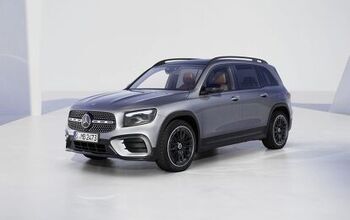
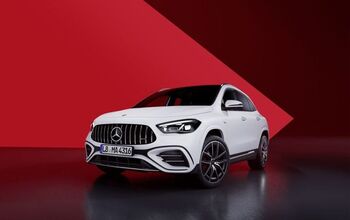

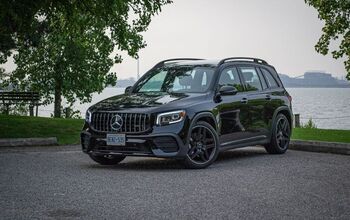

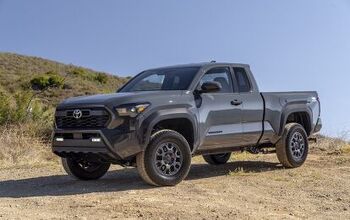
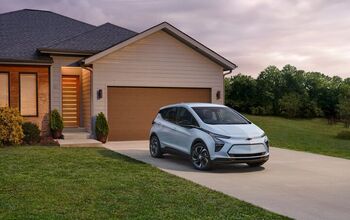

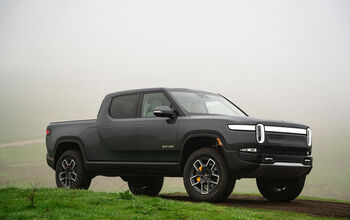



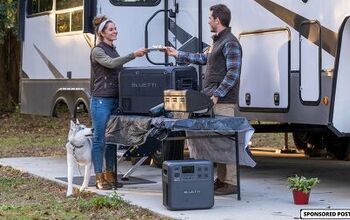


Comments
Join the conversation